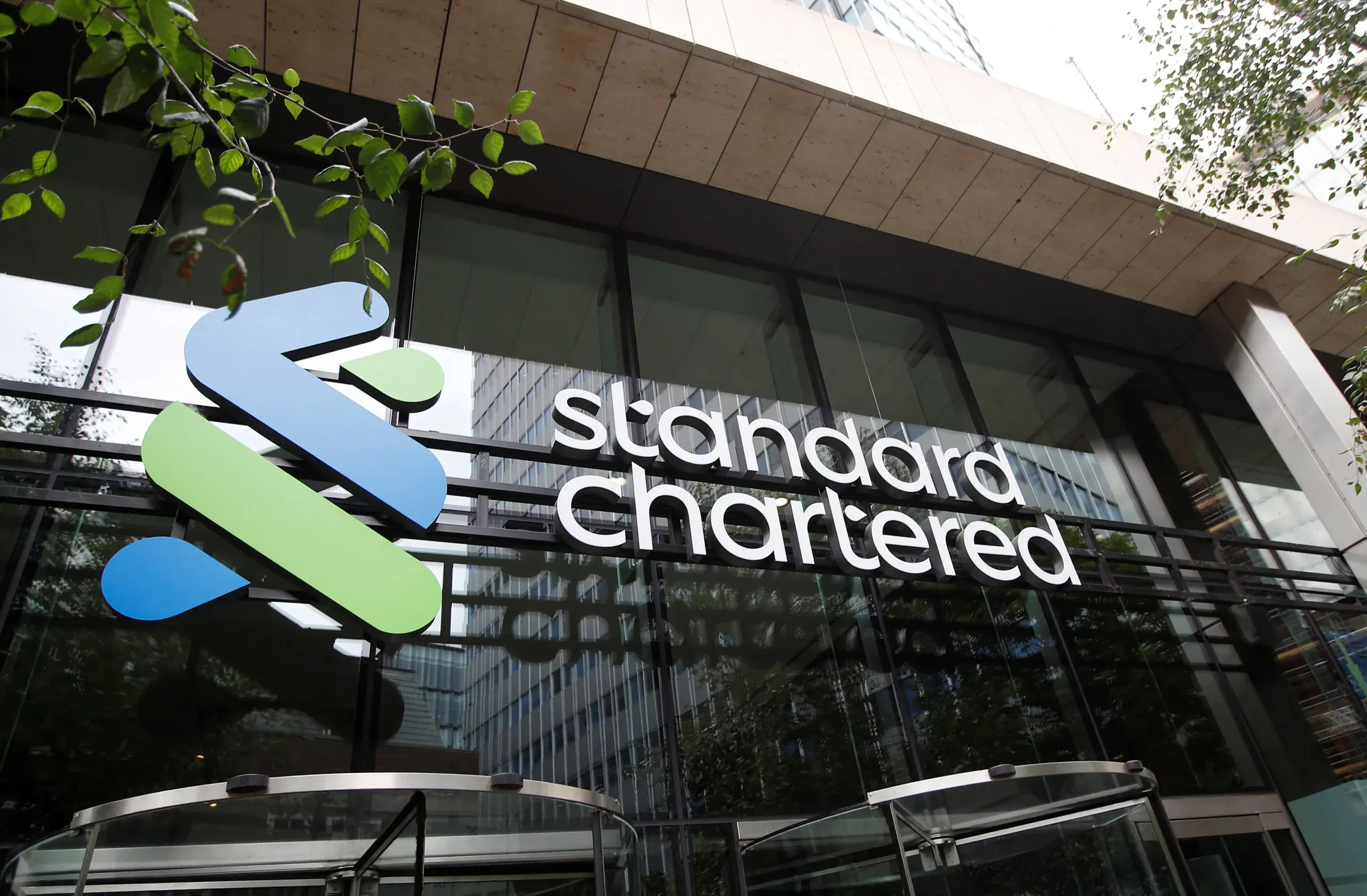
HONG KONG/LONDON (Reuters) -Standard Chartered PLC on Friday rewarded shareholders with dividends and a fresh $1 billion buyback as profit rose 18%, but set out underwhelming growth forecasts that will concern investors amid worries about global banks’ exposure to China.
The bank reported 2023 statutory pre-tax profit rose to $5.09 billion, in line with forecasts, and announced a $1 billion share buyback and a jump in dividend.
But the Asia-focused lender set out restrained new guidance, saying it expected income to grow at the higher end of 5-7% in 2024, lower than the previous estimate of 8-10% given last October. The lender booked 13% income growth in 2023 in constant currency terms.
StanChart also said it would aim to increase returns “steadily” on tangible equity, a key profitability metric, from the current 10% to 12% by 2026, abandoning a previous forecast to hit 11% this year.
StanChart took a $850 million impairment mainly from its stake in Chinese lender Bohai Bank, its second time writing down the value of the unit as the lender was hit by increasing bad loans as growth in the world’s second-largest economy sputtered.
The hefty loss in China, a core target for StanChart’s strategy, underlines the challenge it faces to expand in the country as policymakers struggle to arrest a deepening property crisis and revive weak consumer confidence.
A fresh $150 million writedown of its stake in Bohai Bank, following a $700 million hit earlier this year, reduced its value to $700 million from $1.5 billion at the start of the year.
As well as hurting the value of StanChart’s investment in Bohai Bank, China’s real estate woes also hit the British bank directly as it took a further $282 million provision on expected loan losses relating to the sector.
That brought total provisions for its China real estate exposure to $1.2 billion in the last 3 years.
HSBC Holdings on Wednesday reported a shock $3 billion charge on its stake in a Chinese bank, the largest yet by an overseas lender, amid mounting bad loans in the country, sending the British bank’s shares plunging and taking the shine off its record annual profit.
StanChart said banking industry challenges and the uncertainty swirling around the property market were to blame for the decline in the stake’s current value.
The bank’s China onshore income grew only 4% last year, compared with 42% growth in offshore-related income.
SHAREHOLDER REWARDS
StanChart’s Kong-listed shares had jumped more than 2 in afternoon trade compared with a flat benchmark Hang Seng Index.
The London-headquartered lender also announced a final dividend of $560 million or 21 cents per share, resulting in a 50% increase of its full-year dividend payout to 27 cents, greater than a consensus view of 23.7 cents.
The bumper investor payouts but muted performance outlook from StanChart followed a trend set by European peers including Barclays, Deutsche Bank, and HSBC, as they opt to return more cash to shareholders rather than invest in growth in a tougher operating environment.
CEO Bill Winters said in a release that the bank targets to return at least $5 billion over the next three years.
The chief executive saw his total pay package rise to 7.8 million pounds ($9.88 million) from 6.4 million pounds the year before, as long-term incentive awards performed well, while the group bonus pool for staff shrank 1% to $1.6 billion.
“The ‘last mile’ of inflation may prove stickier than expected, and geopolitical risks abound,” Group Chairman José Vinals said in the release.
“As we begin 2024, the war between Ukraine and Russia continues, increasing uncertainty for nations in Europe and elsewhere.”
($1 = 0.7898 pounds)
(Reporting by Selena Li in Hong Kong and Lawrence White in London; Editing by Kim Coghill)


